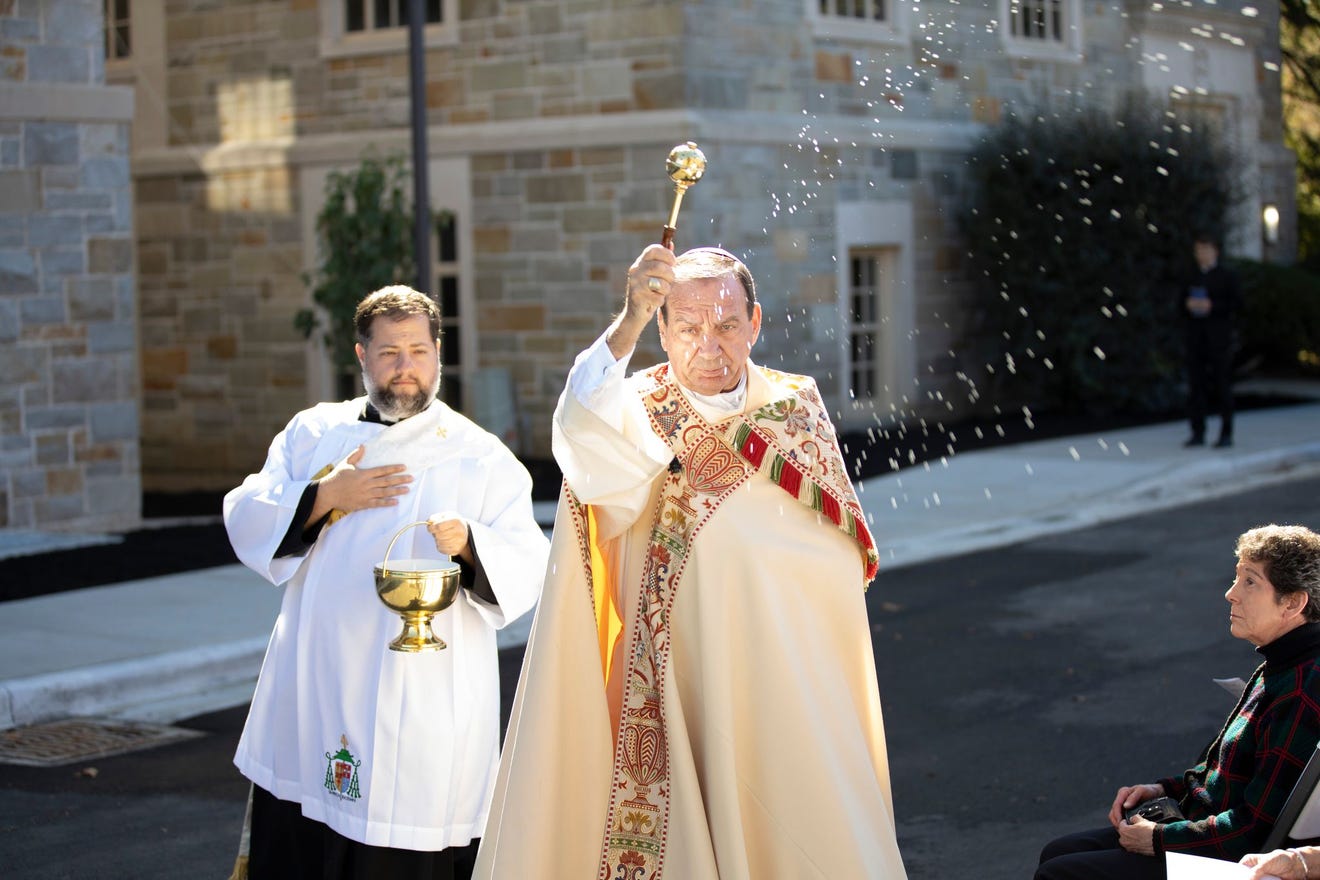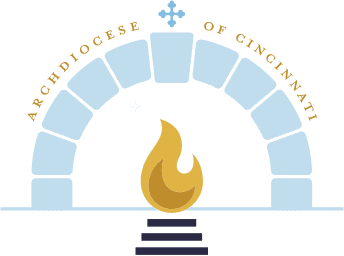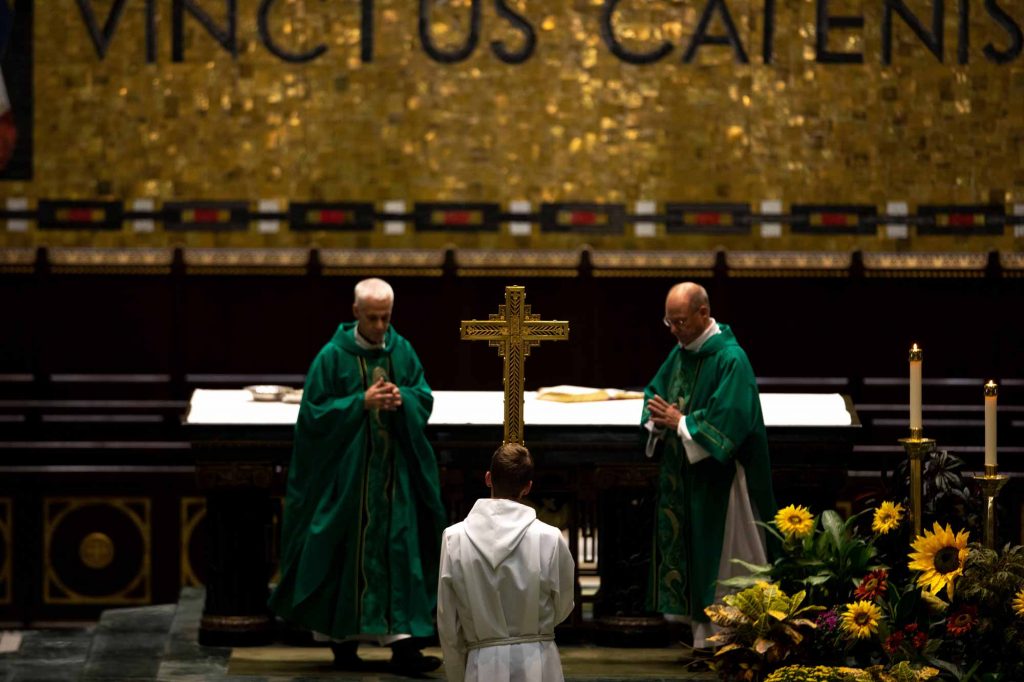By Dan Horn, article originally published in the Cincinnati Enquirer. View original article here.
The Archdiocese of Cincinnati on Friday launched one of the most ambitious reorganizations in its 200-year history, potentially changing when and where almost a half-million Catholics attend Mass, school and other activities connected to their faith.
Known as Beacons of Light, the restructuring process will combine the archdiocese’s 208 parishes into 60 “families of parishes,” which will begin sharing priests and resources as early as next year.
Unlike past attempts to remake the archdiocese, which rarely got out of the planning stages, Beacons of Light is backed by Archbishop Dennis Schnurr and will in some way touch almost every Catholic and priest in the archdiocese’s 19 counties.
The goal, church officials say, is to eventually unite the 60 new parish families into single parishes.
Check the database: How will your parish be affected?
Mergers of such magnitude, which could take years to complete, would eliminate more than 70% of parishes that exist today, transforming the archdiocese and setting the stage for the possible closure of churches and schools.

Schnurr said the reorganization is needed because of a decades-long decline in the number of priests, and because of demographic changes that have left some churches and schools stranded in areas with falling Catholic populations.
“The way our parishes are functioning in this archdiocese, it just is not sustainable any longer,” Schnurr said in a video posted on the archdiocese’s website. “We need to undertake this.”
He said he believes Beacons of Light will revitalize all the archdiocese’s parishes, allowing them to combine operations, share financial resources and create more opportunities for Catholics to engage fully with their faith.
The archbishop acknowledged, however, that many Catholics will be wary of the coming change.
Parishes are not only the center of spiritual life for Catholics but also often the heart of social and cultural life. From schools and sports teams to festivals and fish fries, parishes have bound generations of Catholics together.
Church officials have learned from previous parish and school mergers that tinkering with that bond can stir anger and anxiety.
“We’re very sensitive to the fact that change is difficult,” Schnurr said.
Further complicating matters are the legal and financial logistics of bringing together parishes with different populations, facilities, traditions, leadership and bank accounts. Some are growing and in good financial shape, while others are losing people and money.

Though the archdiocese oversees all the parishes, it doesn’t directly run them. Each essentially operates as a small nonprofit, running its own fundraisers and hiring its own support staff. Combining them into groups raises questions about how they will share resources and decide the fate of their schools and churches.
The archbishop is the spiritual and administrative leader of the archdiocese, but he can’t order parishes to close or merge. Those decisions must be made by pastors and parish councils in the new parish families.
There is no roadmap for how that process will work, or how it might vary from parish family to parish family, because the archdiocese has never attempted anything on the scale of Beacons of Light.
“It’s going to require all the Catholics of the archdiocese to step into a place that we haven’t been before,” said Jennifer Schack, the archdiocese’s spokeswoman. “It’s going to challenge each of us.”
Tough decisions coming soon
The archdiocese covers about 8,500 square miles of cities, suburbs and farmland, so the task of consolidating more than 200 parishes was daunting.
Schack said top church officials and the archdiocese staff worked alongside consultants to come up with a plan that made sense not just for the central office but for individual parishes.
They leaned heavily on geography, trying to group parishes that weren’t spread too far apart, but also considered other factors, such as ties to religious orders or common traditions such as the Latin Mass.
The result is a new map of the archdiocese, one that groups as few as two parishes and as many as 11 into new families that will, if all goes as planned, eventually become single parishes.
Eight parishes will remain on their own. They include large suburban parishes, such as the Community of the Good Shepherd in Montgomery, large urban parishes, such as Holy Family in Dayton, and more isolated parishes with no easy geographical match, such as St. John the Baptist in Harrison.
More common are groupings of four or five parishes spread over dozens of square miles. Some are clustered closely together – most of the parishes in East and West Price Hill, for example, are in the same family – while others cover significantly more ground.
One parish family includes parishes in Reading, Sycamore Township, Deer Park, Pleasant Ridge and Norwood. The largest includes 11 parishes northeast of Dayton spread across Champaign, Clark and Logan counties.
Although many of the expected changes to parish life are likely to unfold over years rather than months, Catholics will see an immediate impact.
The first step will be the creation of new parish councils to represent all the parishes, instead of the individual parishes. The next is the appointment of pastors in the spring to lead each parish family.
The most visible change, at least early in the process, will likely be to Mass schedules. Pastors and parish councils will have to decide which churches get which Masses to accommodate everyone in the new, bigger parish families.
The tougher decisions on whether to close or consolidate schools and churches will likely come later.
“Beacons of Light is not focusing on closing parishes at all,” Schnurr said. “We want these families of parishes to work together and, over time, assess their needs.”
But as they do so, Schnurr said, closures may become an option. “Some family of parishes may come to the conclusion that we really don’t need all of these campuses,” he said. “That is going to be a decision by the family of parishes. It’s not going to be a decision by me or anyone at the archdiocese.”
Time to speak up
Most priests got their first look at the families of parishes plan this week, and the nearly half-million Catholics in the archdiocese saw it for the first time Friday after maps were posted on the archdiocese website at midnight.
A 20-day public comment period is now open, so church officials will find out soon how much support or criticism their work will receive. Comments can be made on the archdiocese’s website at catholicaoc.org, where more details about Beacons of Light also can be found.
Some Catholics who have followed the work on Beacons of Light, which began about a year ago, expressed anxiety about it in the weeks before the maps came out. One concern was whether lay Catholics would have enough input in the process.
“I see it as being a struggle,” said Janie Allen-Blue, in an interview with The Enquirer before the maps were released. As a member of Bond Hill’s Church of the Resurrection, which was part of a four-parish merger a decade ago, Allen-Blue said she knows how difficult it can be to bring together parishes with different social, cultural and financial backgrounds.
Her parish now will join with three others in Cincinnati to form a new parish family, meaning another merger could be coming.
“I’m not trying to be negative,” Allen-Blue said, “but parishioners didn’t come up with Beacons of Light.”
Bruce and Jan Seidel, who are members of two Cincinnati parishes, said they understand the problems Beacons of Light is attempting to address and see it as an opportunity to bring together a more diverse group of Catholics in the new parish families.
But both said they’re concerned the archdiocese didn’t involve more lay Catholics in the process sooner. The couple is active in Voice of the Faithful, which encourages more lay involvement in the church, and worry some Catholics may resist Beacons of Light if they feel it’s being imposed on them.
“We might not like change, but we’re not stupid,” Jan Seidel said. “It’s not a good sign to give us a package that has already been packaged.”
Schnurr urged Catholics to speak up during the comment period, and church officials have said they understand that alienating large swaths of the Catholic population would be counterproductive to their goal of improving Mass attendance and engagement with the church.
“We want to involve as many people as possible in this process,” Schnurr said. “We want to hear from our people.”
It’s unclear, however, how many changes the archdiocese would be willing or able to make to the draft maps released Friday. Tweaks around the edges may be possible, but church officials invested significant time and resources to produce those maps and are unlikely to tear them up and start from scratch.
“The reality is there has been a lot of work done,” Schack said. “We do not anticipate broad changes.”
Though a core group of staff and consultants did most of the work, the archdiocese has been sending updates to parishioners via email and weekly church bulletins since last year. The message has been consistent: Change may be difficult, but it is necessary.
Nowhere has that point been made more clearly than in a 177-page report prepared earlier this year on the archdiocese’s population, finances and schools.
According to the report, Mass attendance in the archdiocese declined 22.5% between 2010 and 2019, Catholic school enrollment fell 14% over the same period, and the number of priests, which has been declining for decades, was projected to drop another 18% by 2031.
The report also found the archdiocese’s demographics continued to shift unfavorably. The Catholic population here is getting older – baptisms declined 19% in the past decade – and the Catholic share of the population fell from 14.2% to 11.9%.
Schnurr said he’s optimistic the archdiocese is turning things around. He said the seminary’s enrollment has doubled from 30 to 60 in the past decade and most parishes are on solid financial footing.
But the report concluded that much of the archdiocese today is built for a world that existed a century ago. To prepare for the next century, Schnurr said, big changes are needed, even if they’re difficult.
“If we just want to stay in one place,” he said, “time will pass us.”

